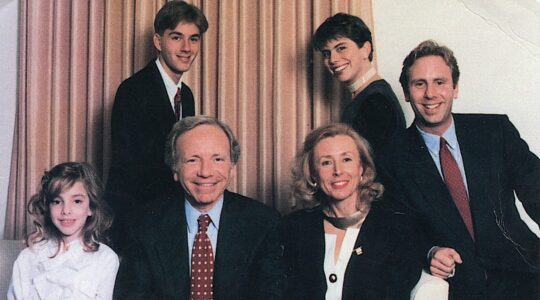CHICAGO (JTA) — “Trust, but verify,” one of President Ronald Reagan’s favorite maxims, has new meaning for America’s not-for-profit community, which manages billions of dollars of contributions, endowments and grants.
In this era of global financial crisis, philanthropic investors are suffering the same fallout from mismanagement, lax oversight and outright thievery that has impacted the private sector. Trust in the realm of resource management arguably is even more precious a currency for philanthropic organizations than it is for profit-making companies. Social welfare charities are the ones charged with translating the altruistic intentions of a concerned public into effective action on behalf of vulnerable populations. The fraying of the cord of public confidence endangers the safety net for those who need it most.
As the president of a major nonprofit, I know that meriting public trust in our stewardship of resources requires no magic tricks. Applying fundamental principles of due diligence is the key.
Those fundamentals include having in place full-time professional staff, including a chief investment officer (my organization is virtually unique among Jewish philanthropies in employing one); an investment committee composed of lay leaders with strong investment expertise who take seriously their fiduciary responsibilities; and outside investment advisers with impeccable credentials.
Before moving forward with any investment, all three parties must agree. The old-boy network (i.e., “I know a guy who knows a guy …”) plays no part in the equation.
Second, never put all your eggs in one basket. It’s shocking how many philanthropies seemed to have violated that most elementary of principles and crashed along with Madoff.
Given that even the most savvy investors sometimes experience losses, effective risk management is absolutely critical. Allocating assets across multiple dimensions (asset classes, industry sectors, countries, currencies, strategies and managers) is essential to ensure that no single factor can seriously damage the total portfolio (ours comprises more than 100 individual investments, each of which includes multiple underlying positions). On top of this extensive diversification, it’s important to add an additional layer of risk control by limiting concentration. For example, we choose to limit any single hedge fund-type investment to no more than 1.5 percent of the total portfolio.
Enforcing these policies paid off for my organization in 2005 when a hedge fund in which we held a position committed fraud. Although we lost slightly more than half of our investment in that one fund, because the size of our investment was limited, the impact on our total portfolio was contained to only four-tenths of a percent. In that calendar year, we still achieved a net total return of 9.8 percent — exactly double the 4.9 percent return of the S&P 500. (We currently manage about $600 million and our annualized return — net of all fees and expenses — during the past 26 years, including 2008, has been 11.1 percent, which is 30 basis points, or 0.3 percent, better than that of the S&P 500).
Verification is another cornerstone of a wise investment policy. Every investment in a pooled endowment portfolio should undergo an exhaustive screening process, which includes such critical elements as a meaningful degree of transparency backed up by third-party verification; financial statements audited by a nationally recognized accounting firm; and a track record that can be rationalized through rigorous, quantitative analysis (i.e., the “too good to be true” test).
We have learned from experience that applying these strategies and methods produces results and earns the trust not only of our contributors but also of our peers, who increasingly have turned to us to make their investments.
There’s the beginning of a trend afoot among Jewish federations that perhaps also could apply to other charities seeking to bring economies of scale to their investment process, yielding upside benefits while minimizing downside risks.
Under the auspices of the United Jewish Communities (UJC) National Jewish Federation Investment Program, 11 federations have combined their investments, with three pools operated by the Boston, Chicago and Miami federations. As one of these pools, in addition to managing the assets of other federations, we also manage the endowment assets of a number of synagogues, day schools and other communal institutions.
Combined, the three investment pools in the UJC program account for slightly more than $1 billion, but that’s less than 10 percent of total investable assets across the 157 Jewish federations in North America. The experience of college and university investment programs suggests that one or two $5 billion to $10 billion endowments are likely to enjoy far better long-term performance than 157 separate endowments, most of which are below $50 million.
The moral of the story, I believe, is to agglomerate smaller funds into larger ones whenever feasible. The days when charities with investments totaling less than $50 million are able to do the job right are over. By pooling assets, procuring top-drawer professional management, partnering with committed laypeople, engaging highly qualified advisers and rigorously applying fundamental investment principles, smaller philanthropic organizations can manage risk effectively, maximize long-term investment success, and thereby deserve and maintain the trust of their donors.
That’s essential if charities are to be effective in helping those in need at a time when society needs us most.





